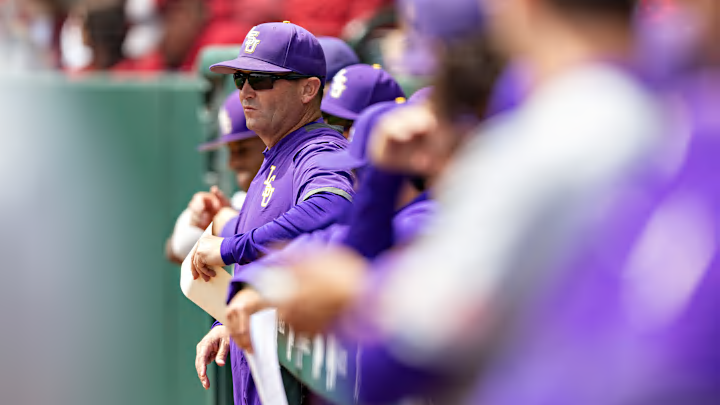Round One - Dylan Crews
Let's be honest, is anyone going to have the Pirates taking anyone else but Dylan Crews number one overall in their mock drafts? There have already been comparisons to Bryce Harper simply because of the amount of hype that Crews has built. There's a very good chance Crews breaks the all-time signing bonus record for a 1/1 draft pick.
Crews are posting insane numbers for Louisiana State University. He's slashing .432/.573/.736 throughout 293 plate appearances. He's hit 17 dingers and has racked up 14 doubles. His out-of-this-world power numbers pale in comparison to his plate discipline. Crews has a 20.8% walk rate and has struck out in just 13.9% of his plate appearances. He has 21 more walks (61) than strikeouts (40). Crews isn't known for his speed, but he's a perfect six-for-six in stolen base attempts and is 23-for-28 throughout 186 college games.
Crews' hit tool is the best of its kind in the draft. It's a true 80-grade weapon, which is only made deadlier by the fact he has elite power. His raw power and exit velocity numbers dwarf most other SEC batters. He's the kind of batter you could see bat over .300 with 35+ home runs a season, and that might be underselling him. His ceiling with the bat is a true superstar.
Fielding wise, most believe he can stick in center field. He's not projected to be the next Andruw Jones with the glove, but he can provide average to above-average defense up the middle. But many believe he could be a plus-defensive right fielder as well. He has a strong enough arm and is more than fast enough to handle any of the three outfield spots. While Crews might be among the league leaders in stolen bases, he could swipe a dozen bags yearly.
The only potential alternative to Crews is his LSU teammate Paul Skenes. Skenes is probably the most talented pitcher in the draft since Stephen Strasburg, but the risk that is associated with taking a pitcher so early puts Crews in the tier above Skenes. Just take the Texas Rangers as a cautionary tale about taking pitchers early. Crews is not only the obvious pick at number one but also the right pick.
